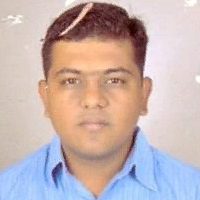
Rohit M. Thanki
Work place: EC Department, Faculty of Technology & Engineering, C U Shah University, Wadhwan, India
E-mail: rohitthanki9@gmail.com
Website:
Research Interests: Image Processing, Information Security, Image Manipulation, Image Compression, Pattern Recognition
Biography
Rohit M. Thanki has received B.E. degree in Electronics and Communication from Atmiya Institute of Technology & Science, Saurashtra University, Rajkot, Gujarat, India in 2008 and M.E. degree in Communication Engineering from G H Patel College of Engineering and Technology, Sardar Patel University, Vallabh Vidyanagar, Gujarat, India in 2010. He is currently pursuing his PhD in Electronics and Communication Engineering from C U Shah University, Wadhwan City, India. He has published and presented more than 20 research papers in various high impact factor international journals and various international as well as national conferences. He has published two books based on his research work with Lambert Publishing House, Germany. He is life member of ISTE and Student member of IEEE. His areas of interests are Digital Watermarking, Compressive Sensing, Biometric Security, Pattern Recognition, Image & Signal Processing
Author Articles
Compressive Sensing Based Multiple Watermarking Technique for Biometric Template Protection
By Rohit M. Thanki Komal R. Borisagar
DOI: https://doi.org/10.5815/ijigsp.2015.01.07, Pub. Date: 8 Dec. 2014
Biometric authentication system is having several security issues. Two security issues are template protection at system database and at communication channel between system database and matcher subsystem of biometric system. In this paper, two level watermarking technique based on CS Theory framework in wavelet domain is proposed for security and authentication of biometric template at these two vulnerable points. In the proposed technique, generate sparse measurement information of fingerprint and iris biometric template using CS theory framework. This sparse measurement information is used as secure watermark information which is embedding into a face image of same individual for generation of multimodal biometric template. Sparse watermark information is computed using Discrete Wavelet transform (DWT) and random seed. The proposed watermarking technique not only provide protection to biometric templates, it also gives computational security against spoofing attack because of it is difficult for imposter to get three secure biometric template information where two encoded biometric template is embed in term of sparse measurement information into third biometric template. Similarity value between original watermark image and reconstructed watermark image is the measuring factor for identification and authentication. The experimental results show that the technique is robust against various attacks.
[...] Read more.Other Articles
Subscribe to receive issue release notifications and newsletters from MECS Press journals